一些新材料发现的故事
Determination of Crystal Structure of Graphitic Carbon Nitride.
Although graphitic carbon nitride (g-C3N4) is a promising photo-functional material, its structure is poorly understood. Authors presented a systematic study of stable crystal structures of g-C3N4 by ab initio evolutionary searching. It was discovered that off-plane distortion and a “macro” A-B stacking of heptazine units are the characteristic of the most stable structure. The recently suggested salt-melt synthesis for g-C3N4 is subject to the contamination of hydrogen, chlorine, and lithium according to our detailed analysis of the crystal structures of C6N9H3-Li3Cl and C6N9H3-LiCl in comparison with the measured XRD patterns of these samples. Finally, a viable synthesis pathway for purifying high-crystallinity g-C3N4 is proposed.
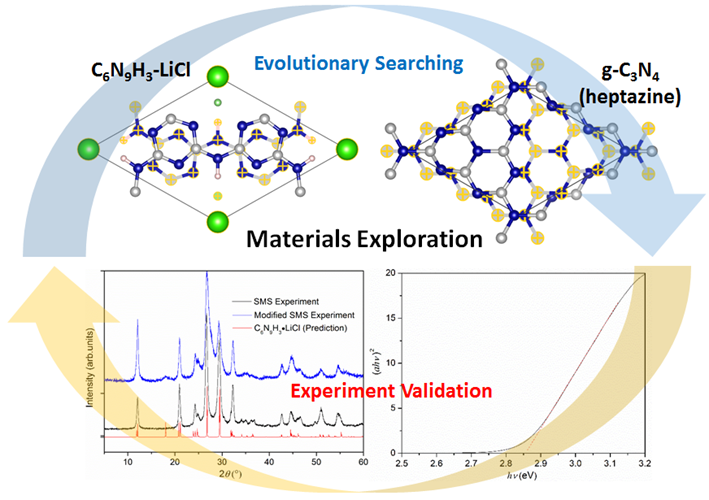
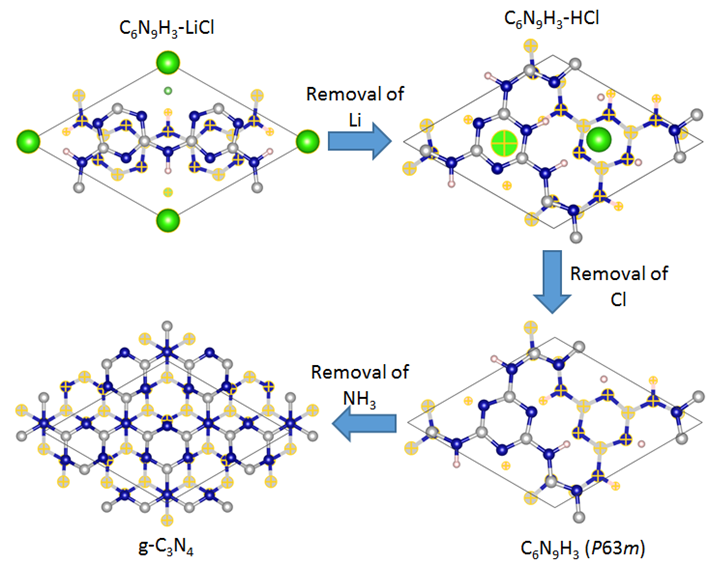
Mixed Valence Tin Oxides as Novel van der Waals Materials.
The mixed valence tin oxides, SnxOy (0.5 < x/y < 1), is predicted as a new member of van der Waals (vdW) materials by ab initio evolutionary structure search. All of the predicted structures consist of b-SnO, Sn2O3 and Sn3O4 monolayers through vdW interaction. Their band gaps, band-edge positions and photo-absorption coefficients can be engineered by stacking the monolayers appropriately, indicating potential for environmentally-benign solar energy conversion in photovoltaic and photocatalytic applications.
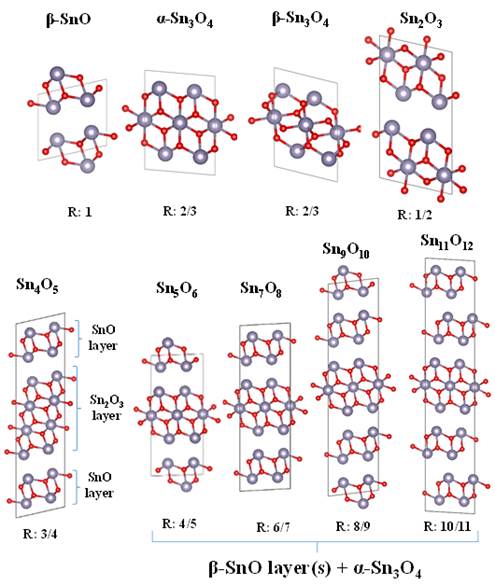
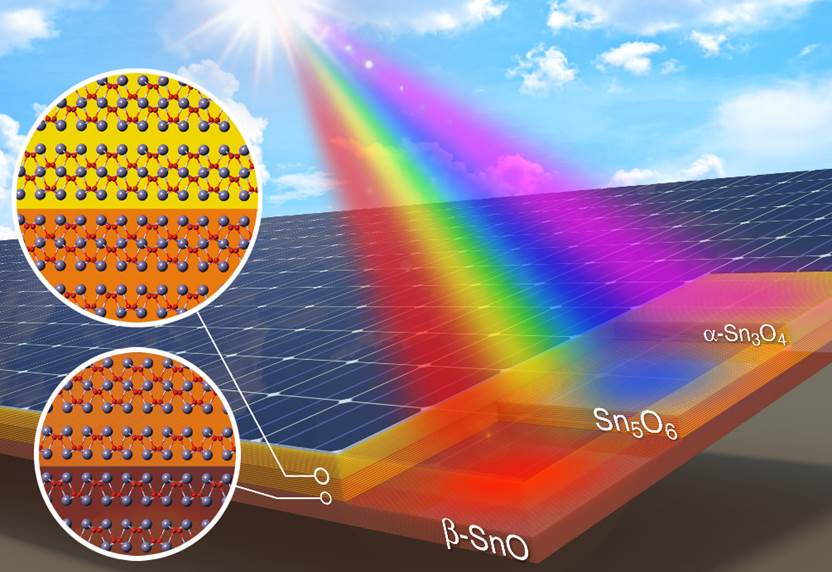
Discovery of the new structure of Ti3Sn instead of commonly accepted DO19.
Titanium is used to produce alloys with applications ranging from body implants to aerospace parts, due to its strength, low density, and corrosion resistance. Wider usage is limited by the high processing costs, mainly associated with its high oxygen affinity which makes the production of metal titanium rather expensive. With a help of the USPEX evolutionary optimization algorithm a new orthorombic structure of Ti3Sn has been discovered insted of commonly accepted DO19 type structure. As well, larger tetragonal structures have been predicted to be stable for Si and Ge. Better understanding of the titanium binary alloys crystal structures will help to develop new materials with optimal properties.
Breakthrough in the studying of Li-S batteries
The existence of Li2S2 in Li-S battery appears to be a long-standing controversy. This work, built upon USPEX, gave the strongest information on this topic so far. Researches in the battery industry are interested in new electrode materials. The underlying theories of USPEX help to draw a light on the complicated phenomenas in this field.
Sodium Pentazolate: a Nitrogen Rich High Energy Density Material
Sodium pentazolate, a new high energy density material was discovered by researchers from University of South Florida using USPEX, the powerful crystal structure search method. The pentazole anion is stabilized in the condensed phase by sodium cations at pressures exceeding 20 GPa, and becomes metastable upon release of pressure.
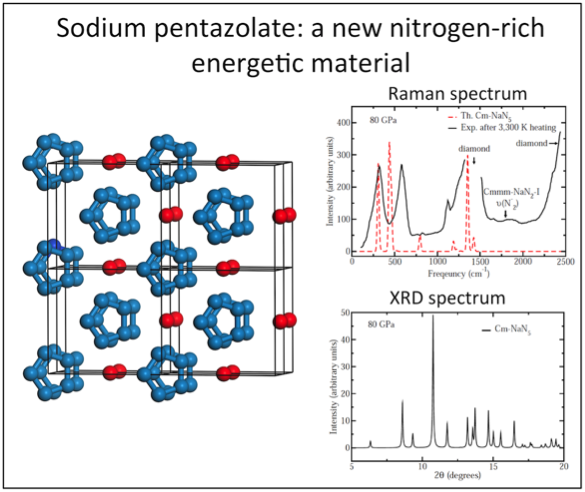
Computational clues into the structure of a promising energy conversion catalyst
A research team led by Annabella Selloni, at Princeton University, employed USPEX to obtain insight into the structure of an active component of iron-doped nickel oxide, a highly active catalyst for water oxidation. Based on the results of USPEX searches in combination with DFT calculations, Li and Selloni were able to identify stable tunnel structures of nickel oxide that can explain the observed mosaic texture that forms during reaction. Armed with a better understanding of the material’s structure, the researchers hope to further map out its activity in the reaction.
Prediction of novel phases of Al with Sc or Ta
Thermodynamically stable binary alloy phases of Al with Sc or Ta have been investigated. The composition, crystal structures and formation enthalpies of the known stable Al-Sc intermetallics (Al3S, Al2Sc, AlSc, AlSc2 and AlSc3) have been correctly evaluated, as well as that of Al3Ta. In addition, novel phases Al3Sc2 and AlTa7, previously unknown, have been identified as stable.
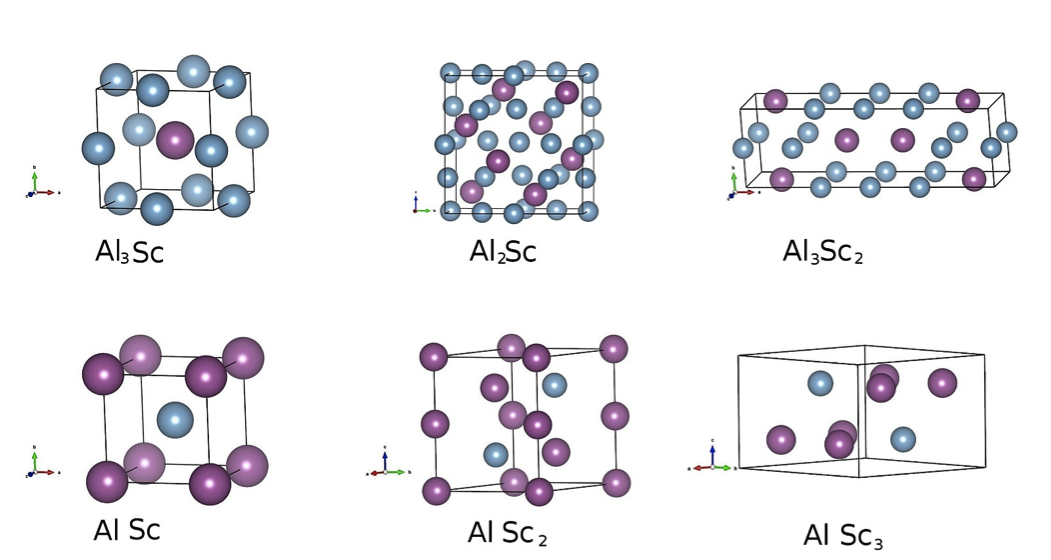
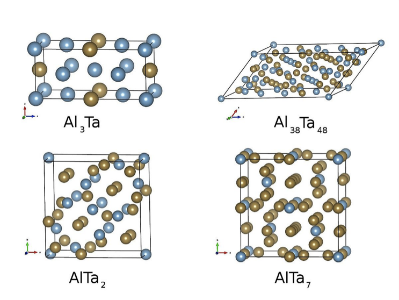
New sulfur hydride H3S and its exciting superconductivity under high pressures
A new sulfur hydride H3S that hardly occurs at atmospheric pressure was theoretical predicted through USPEX code to be formed at high pressure by two main ways: 3H2S→2H3S+S,2H2S+H2→2H3S. Remarkably, the estimated Tc of Im-3m phase for H3S at 200 GPa achieves a very high value of 191~204 K, which sets a record of superconducting temperature. The experimental discovery of superconductivity with a high Tc=203 K and synchrotron XRD experiment in H-S system at high pressure have verified the theoretically predicted results.





